St. Louis Bertrand, OP, Feast Day: October 9
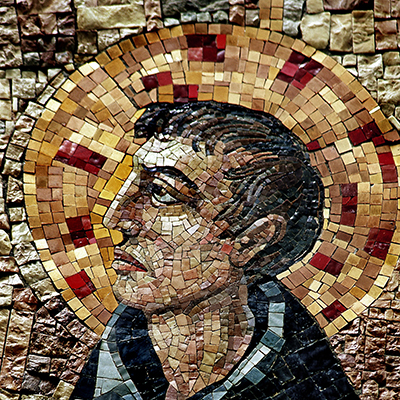
Louis became a Dominican at 18 and was ordained a priest in 1547. He was novice-master in his native Spain on and off for 30 years and gained a reputation for holiness by caring for plague victims in Valencia in 1557. In 1562, he went as a missionary to the Caribbean, working in Colombia, and the Leeward, Virgin and Windward Islands for six years. His apostolic zeal, aided by the gift of tongues and other miraculous events, resulted in 15,000 conversions among the Indian populations. After he returned to Spain, he trained preachers for the missions, saying the only effective preparation was humble and fervent prayer. He was canonized in 1671 and is the principal patron saint of Colombia. St. Louis Bertrand is the patron of Buñol; New Granada; and Colombia.
St. Martin de Porres, Feast Day: November 3
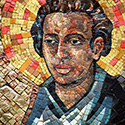
Springfield IL
This illegitimate son of a freed Panamanian slave and a Spanish knight became a hero to the people of Lima, Peru, his birthplace, for his compassionate care of the sick and poor.
Apprenticed at age 12 to a barber-surgeon, Martin also learned herbal medicine from his mother. After working for several years at a Dominican monastery as a Third Order member, he made his profession as a lay brother in 1603. He founded an orphanage and foundling hospital, ministered to African slaves, practiced great penances and experienced mystical gifts. Martin was carried to his grave by prelates and noblemen and all Peruvians acclaimed him their beloved saint. He is the patron of hairdressers and interracial justice.
St. Juan Diego Cuāuhtlahtoātzin, Feast Day: December 9
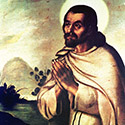
Baptized at 50, this Indian was walking to Mass on Dec. 9, 1531, when Mary appeared to him on Tepeyac Hill, near Mexico City. She asked him to petition the bishop for a shrine to be built there. But the bishop asked for a sign.
On Dec. 12, Juan returned to Tepeyac; Mary told him to pick flowers blooming atop the hill and put them in his cloak to take to the bishop. When Juan opened the cloak, the flowers fell out and the image of Our Lady of Guadalupe adorned his garment. This miraculous image is preserved in the famous basilica in Mexico City. Juan lived out his days as a hermit near the first chapel built there; he was canonized in 2002.
St. Juan Diego is the patron of indigenous peoples.
St. Toribio of Mogrovejo, Feast Day: March 23
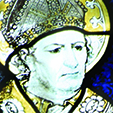
Spanish-born Toribio taught law in Salamanca until 1574, when he was appointed inquisitor of Granada. In 1580, though not yet a priest, he was named archbishop of Lima, Peru, with his episcopal ordination in Seville.
After arriving in Lima in 1581, his 25 years of missionary service included diocesan and provincial synods, visits around the vast diocese, clergy reforms, and Indian-language catechisms. He also introduced European religious orders into Peru, opened the first seminary in the New World and encouraged Indians to become priests.
St. Toribio of Mogrovejo is the patron of Latin American bishops, native rights and Lima, Peru.
St. Cristobal Magallanes Jara, Feast Day: May 21
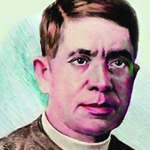
This Mexican saint shares his feast with 21 other priests and three laymen martyred between 1915 and 1937, when Mexican authorities persecuted the Catholic Church.
Many of these Cristero martyrs, canonized in 2000, were tortured and executed when apprehended. Father Magallanes, a zealous pastor in his home state of Jalisco, also did mission work among the indigenous Huicholes. Before they were shot, he said to his priest-companion, “Be at peace, my son; it takes but one moment, then it will be heaven.”
St. Cristobal Magallanes Jara and companions are the patron saints for persecuted Christians.
St. Josemaria Escrivá de Balaguer, Feast Day: June 26
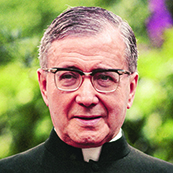
Born in Barbastro, Spain in 1902, Josemaria Escrivá was ordained a priest in 1925. In 1928, he founded Opus Dei, Latin for “God’s work,” as an apostolate in the ordinary circumstances of life, especially work, focusing on the universal call to holiness. It includes laypeople, priests and seminarians.
His best known publication is “The Way,” which sold millions of copies.
In 1975, Msgr. Escriva died at age 73 in Rome, where he had lived, directing the international organization, since 1946. In 1982 Opus Dei was given the status of a personal prelature, the equivalent of a nonterritorial diocese. Its founder was beatified in 1992 and canonized in 2002 by Pope John Paul II.
St. Josemaria Escrivá is the patron of Opus Dei and people with diabetes.
All photos and descriptions from CNS Saints.
